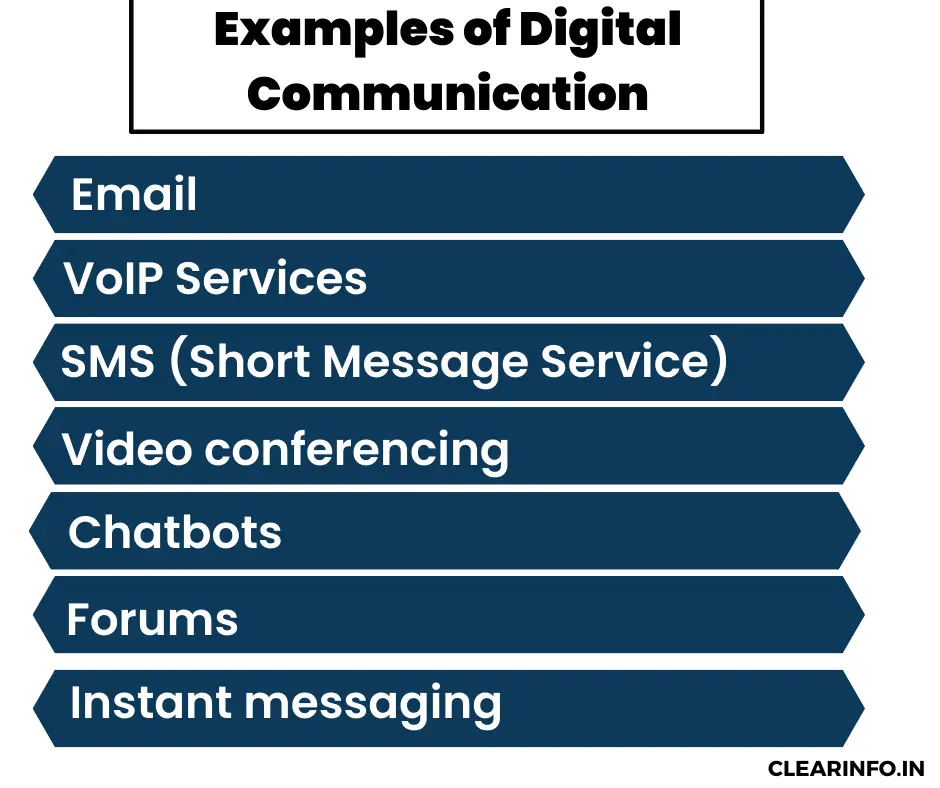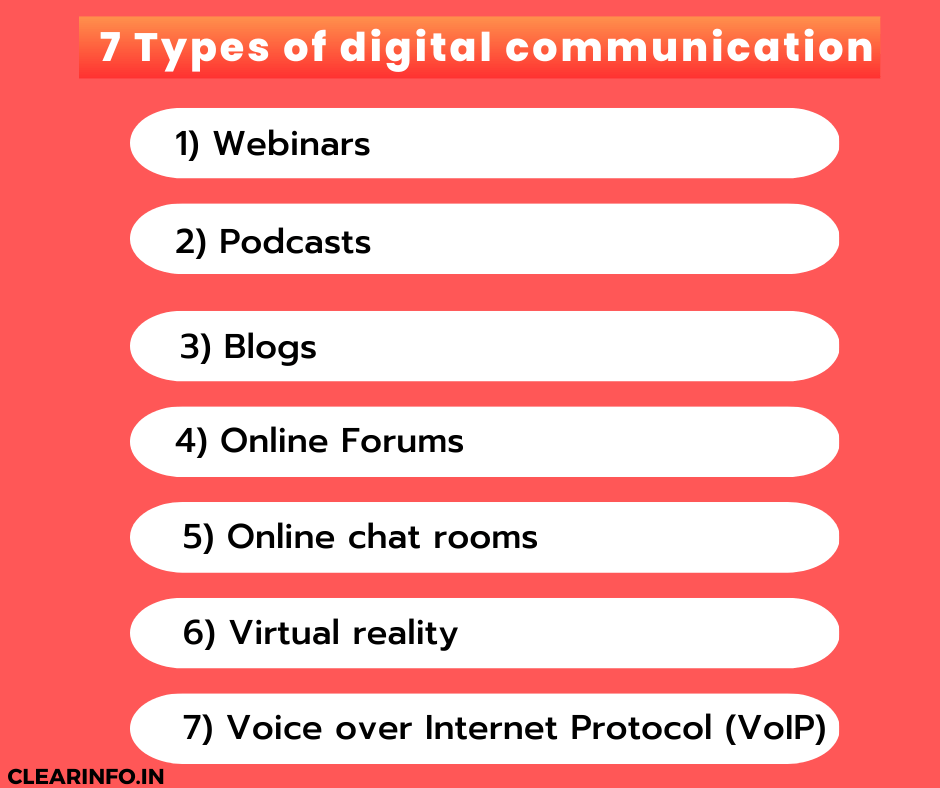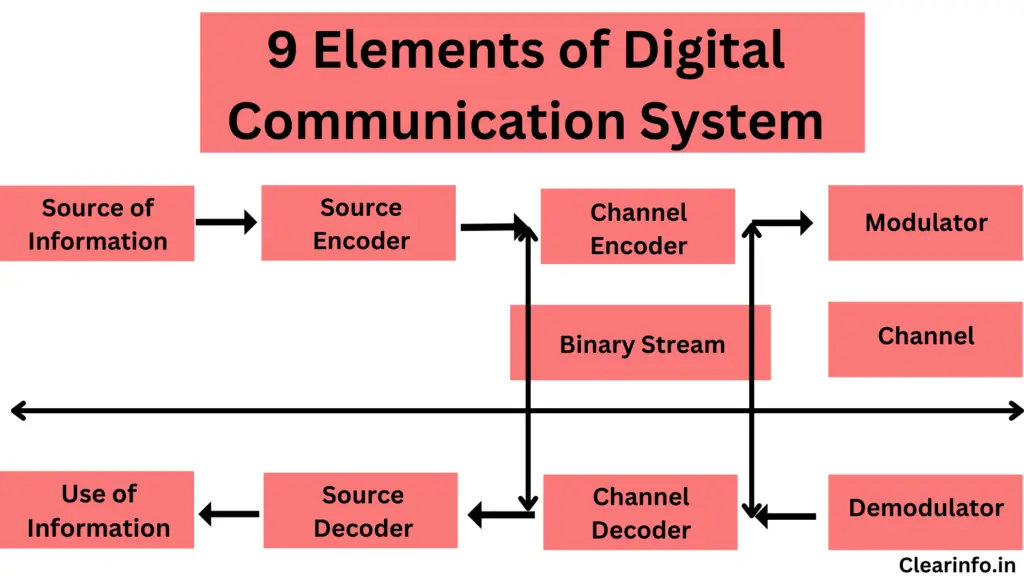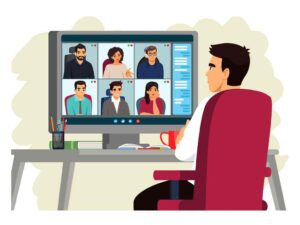In today’s fast-paced digital world, digital communication has become an integral part of our daily conversations. With its undeniable speed, convenience, and accessibility, digital communication has numerous advantages that have revolutionized the way access information. However, like any other technology, it also comes with its share of drawbacks. In this blog, we will explore the top 15 advantages and disadvantages of digital communication with exmaples.
What is digital communication?
The transmission of information and messages using electronic devices like smartphones, tablets, and other digital platforms is known as digital communication. This type of communication involves the use of digital signals that are transmitted and received by electronic devices, allowing people to communicate and share information across different locations and time zones. Examples of digital communication include emails, instant messaging, video conferencing, social media platforms, and other online communication tools.
15 advantages and disadvantages of digital communication
Digital communication has undoubtedly revolutionized the way we interact with each other from all over the world instantly, but it’s not without its drawbacks.
Advantages of digital communication
1/ Instant communication: One of the most significant advantages of digital communication is its speed. Messages and information can be transmitted instantly, making communication much faster and more efficient. 2/ Cost-effectiveness: Digital communication is often more cost-effective than traditional communication methods, as it eliminates the need for paper, stamps, and other physical materials. 3/ Accessibility: Digital communication allows people with disabilities to communicate more easily, as there are a variety of assistive technologies available that can help them access digital communication platforms. 4/ Convenience: Digital communication can be accessed from anywhere and at any time. As long as they have access to the internet or a digital device, making it highly convenient. 5/ Improved customer service: Digital communication platforms such as social media and email make it easier for businesses to communicate with their customers, providing faster and more convenient customer service. 6/ Better data tracking: Digital communication platforms often provide data tracking and analytics tools, allowing businesses to track the effectiveness of their business communication efforts and make data-driven decisions. 7/ Enhanced networking: Digital communication platforms provide opportunities for networking and building professional relationships, allowing people to connect with others in their industry or field. 8/ Rich media: Digital communication allows for the sharing of rich media such as images, videos, and audio files, making communication more engaging and interactive. 9/ More options for communication: Digital communication platforms offer a range of options for communication, including text, audio, and video, allowing people to choose the most appropriate method for their needs. 10/ Improved work-life balance: Digital communication can improve work-life balance by allowing people to communicate and work from home, reducing the need for physical travel and increasing flexibility. 11/ Global reach: Digital communication allows people to communicate with others from all over the world. This allows businesses to connect with customers from diverse regions and broaden their reach to a larger audience. 12/ Improved communication during emergencies: Digital communication tools can be vital during emergencies, allowing people to quickly and easily communicate with emergency services and other relevant authorities. 13/ Faster decision-making: Digital communication tools can speed up the decision-making process by allowing people to communicate and collaborate more efficiently. 14/ Reduces environmental impact: Digital communication reduces the need for paper-based communication, which can help reduce the environmental impact. 15/ Increases transparency: Digital communication can increase transparency by allowing people to share information and ideas more easily.
Disadvantages of digital communication
1/ Misinterpretation: Digital communication can be misinterpreted or misunderstood due to the lack of nonverbal cues such as tone of voice and facial expressions. 2/ Impersonal: Digital communication can feel impersonal, as it lacks the human touch and connection of face-to-face interaction.
Related Reading: Advantages and Disadvantages of face-to-face interaction
3/ Security risks: Digital communication can be vulnerable to security breaches and hacking, which can compromise sensitive information. 4/ Dependence on technology: Digital communication can create a dependence on technology, and internet connectivity, which can be unreliable and subject to technical issues. 5/ Information overload: Digital communication can lead to information overload, as people are bombarded with messages and notifications. 6/ Lack of privacy: Digital communication can compromise privacy, as messages and information can be easily intercepted or shared without consent. 7/ Misinformation: Digital communication can spread misinformation and fake news, as information can be easily shared and disseminated without proper fact-checking. 8/ Lack of emotional connection: Digital communication can lack emotional connection, making it difficult to establish trust and build relationships. 9/ Digital divide: Not everyone has access to digital communication tools, creating a digital divide between those who do and those who do not. 10/ Overuse: Digital communication can be overused, leading to burnout and decreased productivity. 11/ Decreased focus: Digital communication can lead to decreased focus and attention, as multitasking and switching between communication channels can be hectic. 12/ Social isolation: Digital communication can lead to social isolation, particularly for those who rely solely on digital communication and lack social interactions. 13/ Reduced productivity: Digital communication can reduce productivity, as constant interruptions and distractions can impede workflow. 14/ Technical skills required: Digital communication can require technical skills and knowledge, making it difficult for some people to use it effectively. 15/ Stereotyping: Digital communication can perpetuate stereotypes and prejudice, as people can hide behind anonymity and say things they wouldn’t say in person.
What are the advantages of non-digital communication?
1/ Reduced distractions: Non-digital communication can be less distracting, as it doesn’t come with the notifications and distractions of digital communication tools. 2/ Personal touch: Non-digital communication, such as face-to-face interactions or handwritten letters, can have a personal touch that is often missing from digital communication. 3/ Authenticity: Non-digital communication can convey authenticity and sincerity, as people may feel more compelled to express themselves genuinely 4/ Emotional connection: Non-digital communication can help establish an emotional connection between people, as it allows for nonverbal cues and emotional expressions.
Examples of digital communication

- Email: Email is a common form of digital communication, allowing people to send and receive messages instantly and easily.
- VoIP services: VoIP services such as Skype or Google Voice allow for voice communication over the internet, rather than traditional phone lines.
- SMS (Short Message Service): Sending text messages between mobile phones.
- Chatbots: Automated chat programs used for customer service and support, such as those used on company websites or messaging platforms.
- Instant messaging: Real-time chat between two or more people using messaging applications like WhatsApp, Facebook Messenger, or Skype.
- Video conferencing: Real-time audio and video communication between two or more people in different locations, using services like Zoom, Skype, or Google Meet.
- Forums: Online discussion groups that allow users to post messages and respond to other users.
Advantages and disadvantages of digital communication over analog communication
Digital communication and analog communication are two distinct methods of transmitting information from one place to another. The pros and cons listed below should be carefully considered when choosing between digital and analog communication methods for a particular application.
Benefits of digital communication over analog communication:
1/ Better quality: Digital communication typically provides better quality and clarity than analog communication, due to its ability to transmit data without loss or distortion. 2/ Greater capacity: Digital signals can carry more information than analog signals, allowing for greater data transmission and storage. 3/ More efficient: Digital communication is faster and more efficient than analog communication, allowing for quicker transmission of data. 4/ Security: Digital signals can be encrypted and protected more easily than analog signals, providing greater security and privacy for sensitive information. 5/ Flexible application: It is comparatively simpler to combine digital signals by employing Time Division Multiplexing (TDM) when compared to combining analog signals through Frequency Division Multiplexing (FDM).
Limitations of digital communication over analog communication:
1/ Higher cost: Digital communication technology can be more expensive than analog communication technology. 2/ Complexity: Digital communication requires more complex hardware and software than analog communication. 3/ Dependent on electricity: Digital communication devices and systems require a reliable source of electricity to function, while analog communication devices can operate without electricity. 4/ Compatibility issues: Digital communication devices and systems may not be compatible with older analog communication devices and systems.
Pros and cons of online communication in business
Online communication can offer many benefits to businesses, such as convenience and cost-effectiveness, it also has its drawbacks, such as security risks and the potential for misunderstandings. Let’s discuss some of the primary ones:
Positives of online communication in the Workplace
- Improved customer service: Online communication tools, such as chatbots and social media, can help businesses provide more responsive and personalized customer service.
- Cost-effective: Online communication tools, such as email, video conferencing, and instant messaging, are often more cost-effective than traditional methods of communication, such as phone calls or in-person meetings.
- Greater reach: Online communication can help businesses reach a wider audience, expanding their customer base and market reach.
- Time-saving: Online communication can save time by eliminating the need for travel or in-person meetings, which can be time-consuming.
Negatives of online communication in the Workplace
- Technology failures: Online communication such as business conversation relies heavily on technology, which can be subject to failures, such as connectivity issues or software glitches.
- Information overload: Online communication tools can result in an overwhelming amount of information and communication, which can be difficult to manage and prioritize.
- Time management: Online communication can be time-consuming, with the need to manage multiple channels of communication, respond to emails, and participate in online meetings.
Affordances of digital communication
The term “affordance” refers to the properties or characteristics of an object or technology that suggest or allow certain types of interactions or uses. In the context of digital communication, some of the affordances of this technology include: 1/ Customization: Digital communication technologies often allow for the customization of communication settings, such as notification preferences and user profiles. 2/ Interactivity: Digital communication technologies often feature interactive elements such as live chat, video conferencing, and social media, allowing for more engaging and dynamic communication. 3/ Synchronous and asynchronous communication: Digital communication allows for both synchronous (real-time) and asynchronous (delayed) communication, which can provide greater flexibility and convenience. 4/ Speed: Digital communication can be transmitted and received quickly, allowing for rapid communication and decision-making. 5/ Archiving: Digital communication can be easily archived and retrieved for future reference, making it easier to keep track of communication history and maintain records. 6/ Integration with other technologies: Digital communication tools can be integrated with other technologies, such as project management software or customer relationship management (CRM) tools, to streamline communication and improve workflow.
What are the advantages and disadvantages of handwritten communication compared to digital communication?
Two prominent forms of communication that are often compared are hand-written communication and digital communication. In this section we will examining the unique benefits and drawbacks of each method in various contexts.
Advantages of handwritten communication over digital communication:
1/ Personal Touch: Handwritten communication adds a personal touch and can convey a sense of care and thoughtfulness to the recipient. 2/ Emotional Connection: Handwritten communication can create an emotional connection with the recipient, as it shows that the sender took the time to write a message by hand. 3/ No Technology Required: Handwritten communication does not require any technology or electricity, making it ideal for situations where digital communication may not be available or practical. 4/ No technical skills required: Unlike digital communication, no technical skills are required to write a letter by hand, making it more accessible to people who may not be as tech-savvy. 5/ Privacy: Handwritten communication can be more private and secure than digital communication, as it is less susceptible to hacking or data breaches.
Disadvantages of Handwritten Communication over digital communication:
1/ Slow: Handwritten communication can be slow and time-consuming, particularly for longer messages or documents. 2/ Limited Reach: Handwritten communication is limited in reach, as it cannot be easily copied or shared with a large audience. 3/ Inconvenience: Handwritten communication can be inconvenient, particularly if the recipient is not physically present or if the message needs to be delivered quickly. 4/ Limited editing options: Handwritten communication provides limited editing options, as mistakes cannot be easily corrected. In contrast, digital communication allows for easy editing and revision of messages.
Related Reading: What is Written Communication: Definition, Examples & Skills What are the merits and demerits of written communication
Uses of digital communication
With the rise of various digital channels and tools, we are now able to communicate and connect with people from all over the world, share information and ideas instantly, and conduct transactions and operations more efficiently than ever before. In this context, it is important to understand the diverse uses of digital communication:
- Sending and receiving emails.
- Messaging and chatting with others through social media platforms or messaging apps.
- Video conferencing for virtual meetings and interviews.
- Collaborating and sharing documents through cloud-based platforms.
- Advertising and marketing through digital channels.
- Providing customer service and support through online channels.
- E-learning and online education.
- Online shopping and e-commerce.
- Electronic banking and financial transactions.
- Telemedicine and remote healthcare services.
Types of digital communication
These different types of digital communication allow us to share ideas, collaborate with others, and build relationships, whether for personal or professional purposes. The primary types of electronic communication that can be used to enhance our communication and connection with others include: 
Advantages and disadvantages of communication system
Advantages of communication systems include the ability to connect with others instantly, share information quickly and easily, collaborate with others regardless of location, and enhance productivity and efficiency. Communication systems also enable us to build and maintain relationships with others, whether for personal or professional purposes. Disadvantages of communication systems include the potential for misinterpretation or misunderstanding, the lack of nonverbal cues that are present in face-to-face communication, the possibility of communication breakdowns due to technical issues, and the potential for information overload. Overall, communication systems offer many benefits and have transformed the way we communicate and connect with others, but they also come with their own set of challenges and drawbacks that should be considered when using them.
Elements of communication system
A communication system is composed of several key elements that work together to enable the transmission of information from one location to another. The primary elements of a communication system are:

Frequently Asked Question
Q1) What are the advantages of digital communication?
Ans: The biggest merit of digital communication is that it is often less expensive than traditional forms of communication, particularly when it comes to long-distance communication.
Q2) What are the disadvantages of digital communication systems?
Ans: The main disadvantage of a digital communication system is the potential for miscommunication, as digital communication can lack the nonverbal cues present in face-to-face communication.
Q3) What are the 4 advantages of a digital system?
Ans: The four advantages of digital systems are as follows, digital systems are much more accurate than analog systems. Secondly, digital systems are highly flexible, third digital systems can process data at incredibly high speeds, and finally, digital systems can store vast amounts of data in a very small space.



